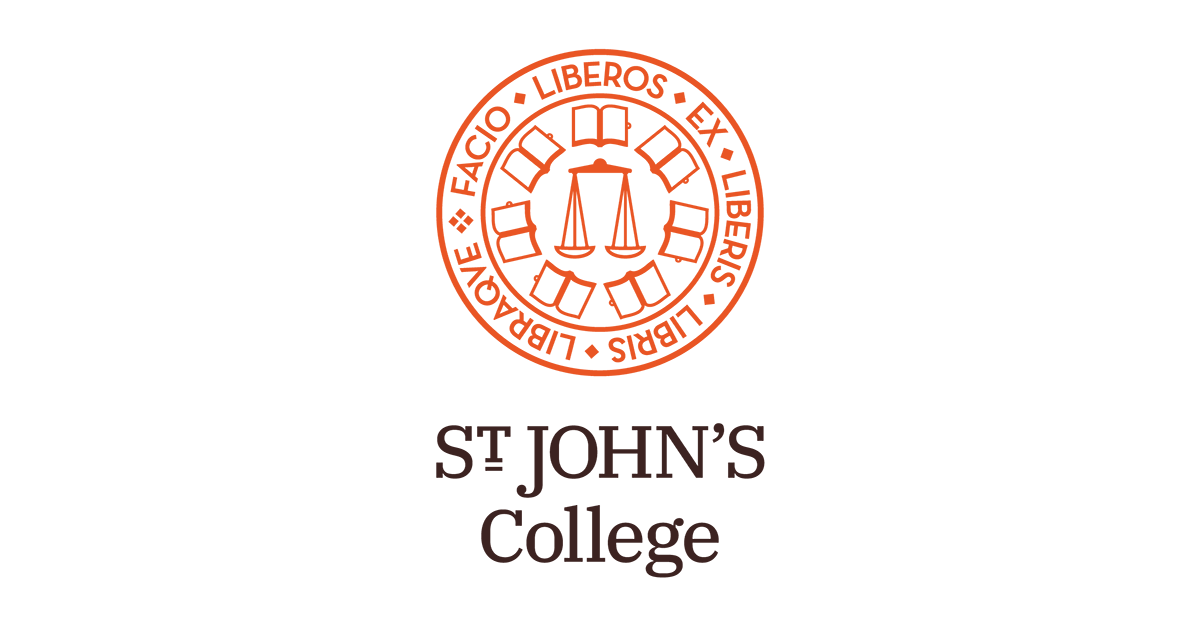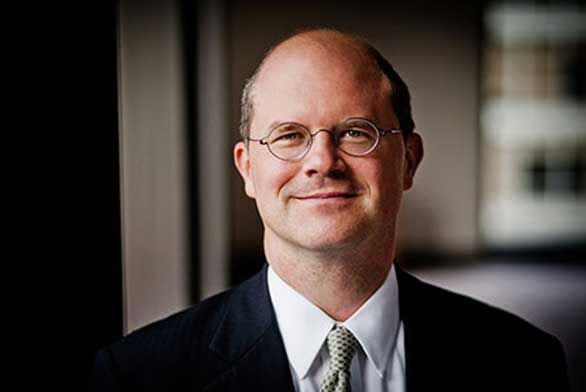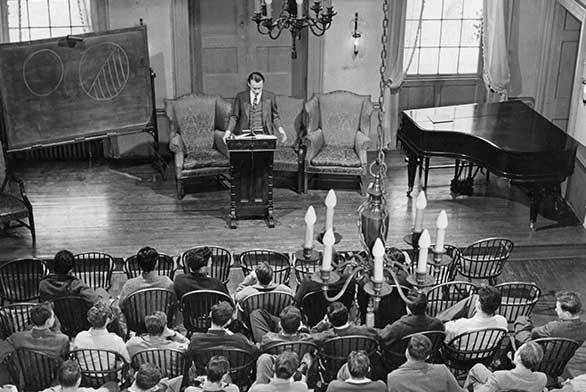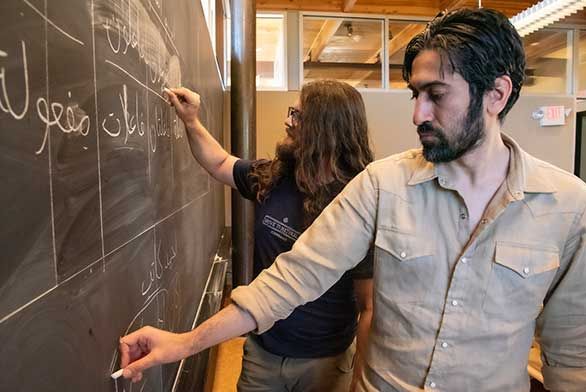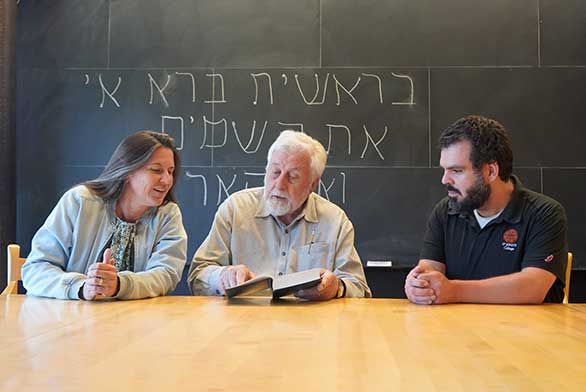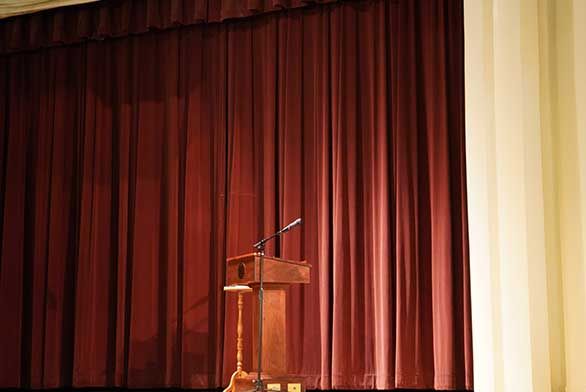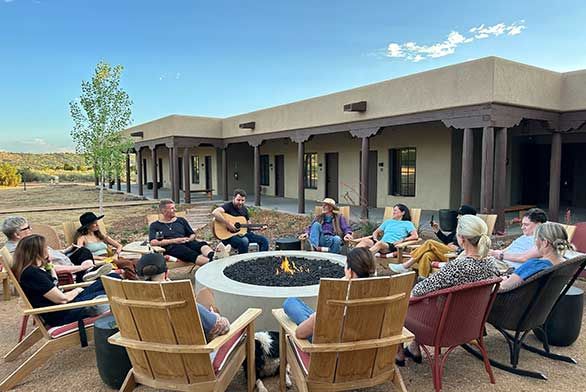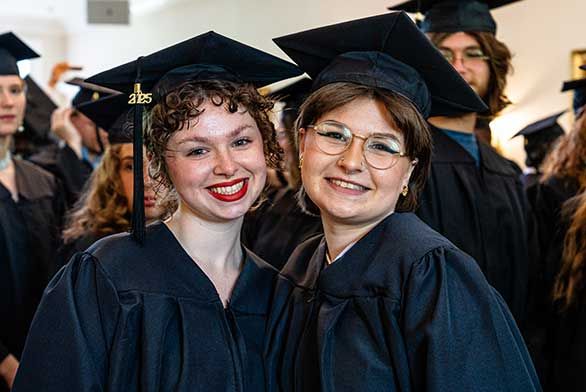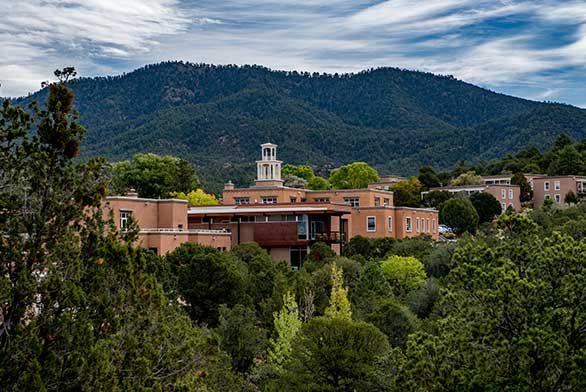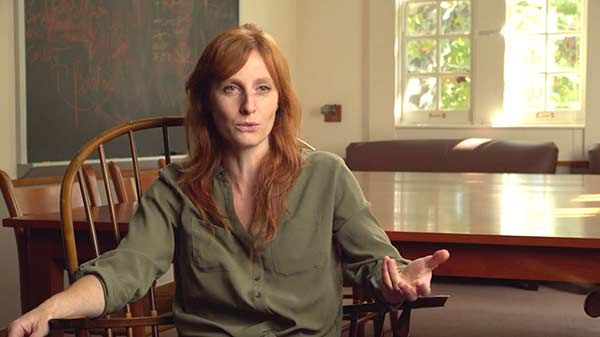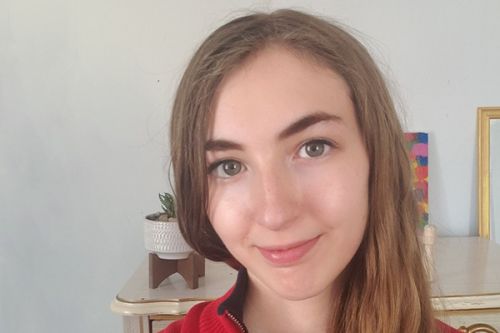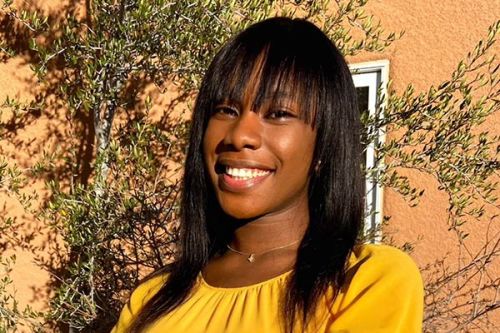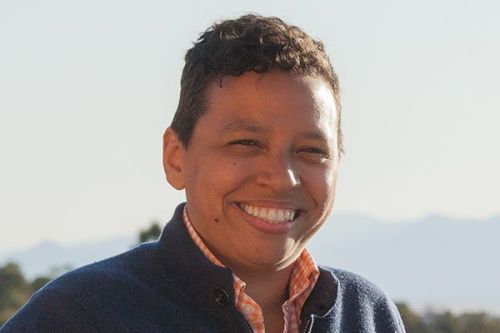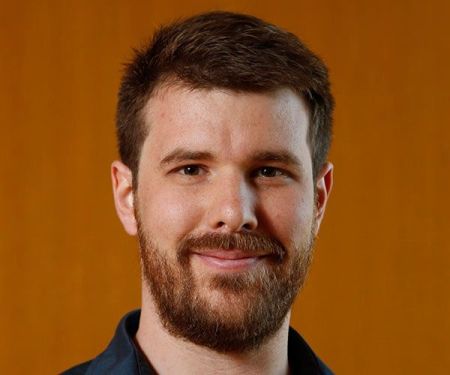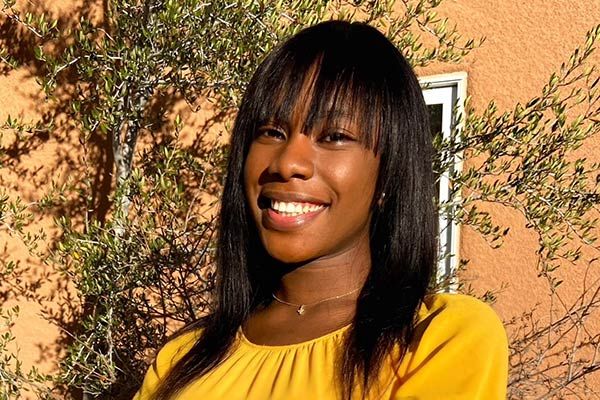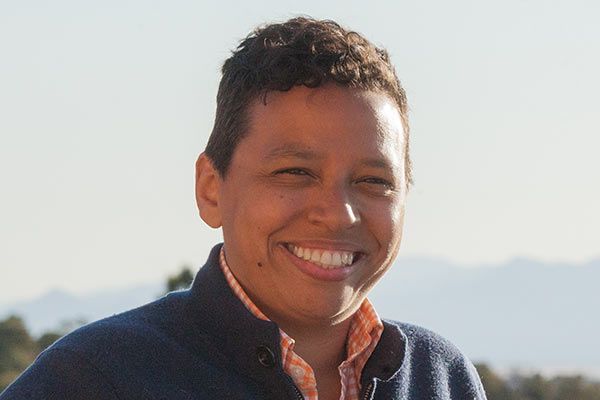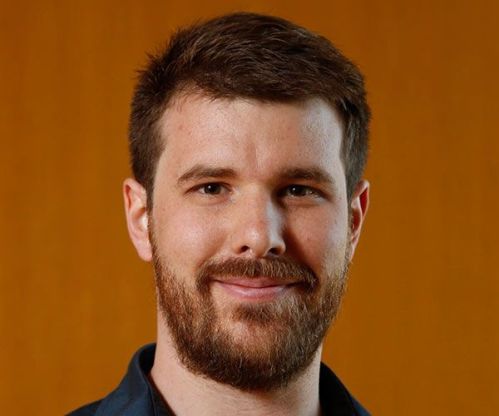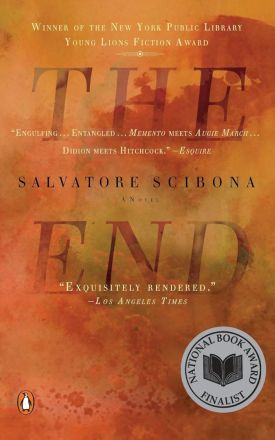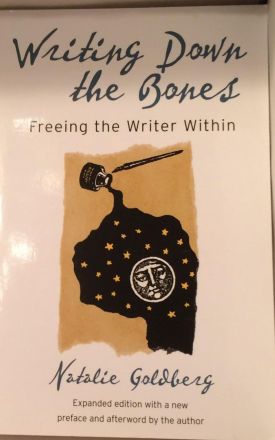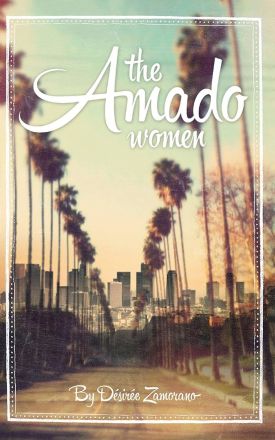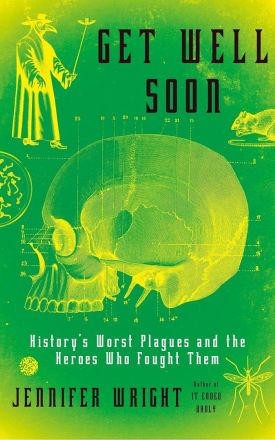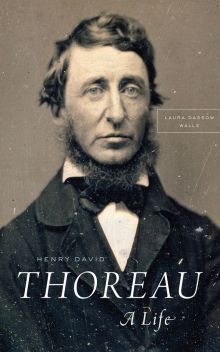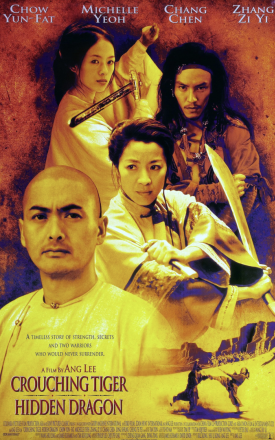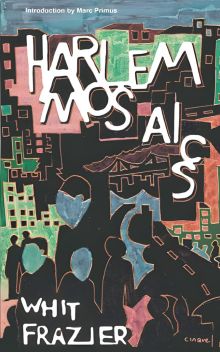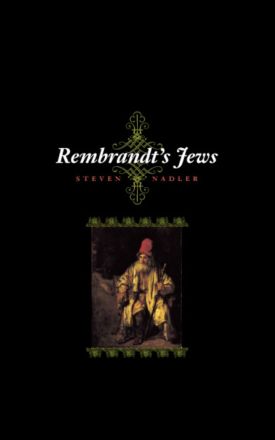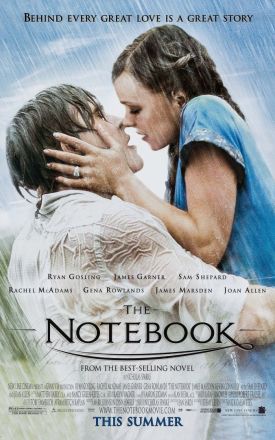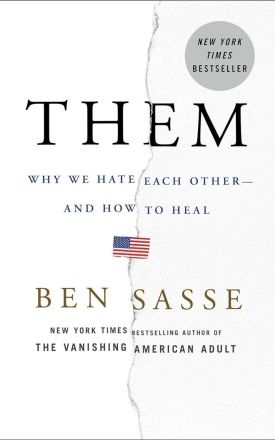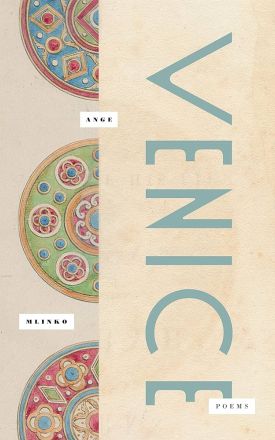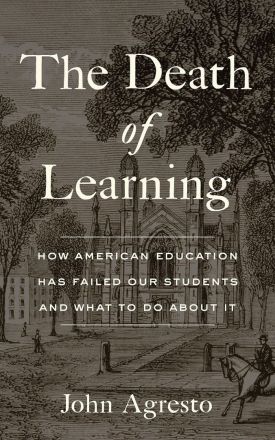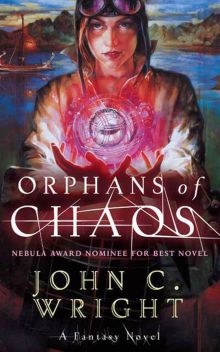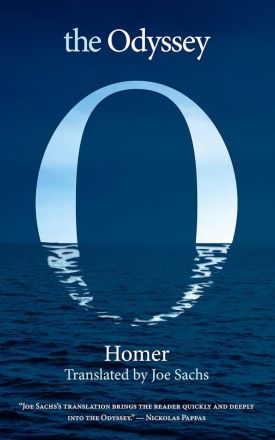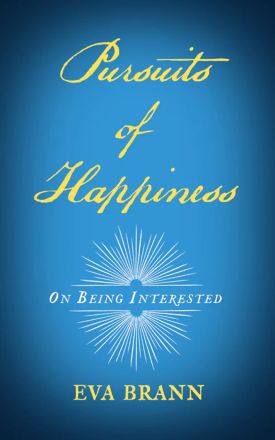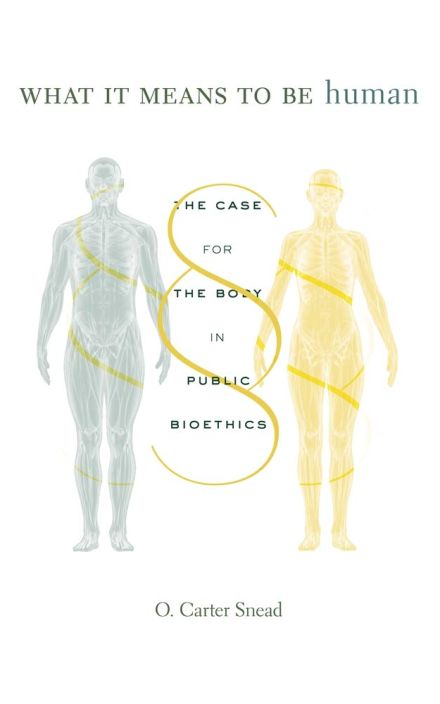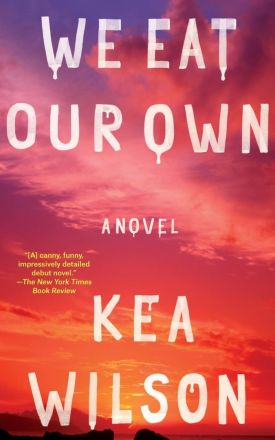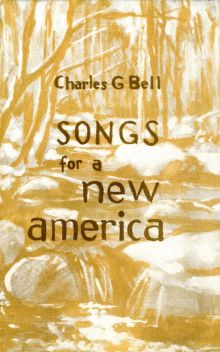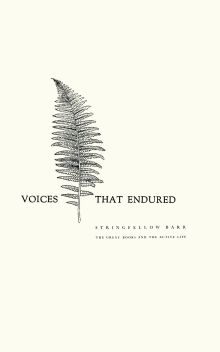Profile of
Genevieve DeMajistre (A22)
Institution &
Position
Smithsonian Environmental Research Center (SERC)
Intern
Experience
Genevieve DeMajistre’s (A22) internship with the Smithsonian Environmental Research Center (SERC) was conducted both online and in person. Her assigned project primarily involved data analysis, and the remote aspect made it easy for her to attend mandatory seminars and optional coding workshops. While physically present, she assisted colleagues with a range of projects, including measuring the heights and widths of specific plant species to calculate biomass across varying conditions during the growing season. DeMajistre’s St. John’s education prepared her well for the experience. “Comprehending the research papers was much like reading the documents from lab,” she says. “After so much critical reading it was easier to identify what was important, what I needed to be able to define, [and] the consequences of what was being said.” She was drawn to the internship for data analysis, but her interest has since broadened to include setting up experiments, constructing their sites, and collecting data.
Profile of
Apurva Sharma (A23)
Institution &
Position
Nepal Mediciti Hospital, Kathmandu, Nepal
Intern
Experience
Apurva Sharma (A23) interned under Dr. Prakash Paudel at one of Nepal’s leading hospitals for neuroscience, where she shadowed physicians in consultations and daily rounds, entered data during out-patient consultancies, worked with other interns to create discharge reports, and attended weekly presentations, among other tasks. Her multidisciplinary St. John’s education inspired her to look at scientific topics from different points of view. “I kept being drawn to ask questions regarding the mind through a more spiritual lens and comparing that to the doctors’ technical idea of the brain,” she says. “Engaging in this sort of speculative dialogue only made me more inquisitive about how the human mind works.” Viewing CT scans and MRIs, Sharma says, “felt strange for some reason. Perhaps because I’ve been engaging in the idea of the mind as a metaphysical one.” She found the internship experience “transformative in all respects,” and it it reinforced her desire to work in neuroscience while providing a glimpse into the day-to-day life of health professionals.
Profile of
Kasparas Adomaitis (A23)
Institution &
Position
Lithuanian Radio and Television, Investigative Journalism Division
Intern
Experience
A concern for political transparency and freedom of the press in his home country led Kasparas Adomaitis (A23) to intern at the investigative journalism division of Lithuanian National Radio and Television (LRT). Working within a team of five, he helped conduct, write, and present a range of investigations, one of which involved perusing the state archives to uncover how certain Lithuanian state property was privatized after the fall of the Soviet Union. For another, Adomaitis made English translations of ongoing investigations to be shared with foreign media outlets. “My most memorable project was investigating the migration networks of people from the Middle East through Belarus into Lithuania,” he says. “I interviewed Kurdish migrants who had crossed the Lithuanian border into detention centers.” He appreciated the welcoming support his of his mentors and notes that “having always found it difficult to find a career path that would genuinely interest me, this internship made me realize that I could pursue journalism and be good at it.”
Profile of
Chinazor Ike-Njoku (SF23)
Institution &
Field of Study
Harvard University
Course: Introduction to Psychology
Experience
Chinazor Ike-Njoku’s (SF23) desire to pursue a career in psychology was reinforced when she took a seven-week intensive course at Harvard, which has one of the nation’s top programs. Introduction to Psychology led by neuropsychology professor Dr. Elizabeth Phelps, encompassed the history of the discipline and current studies on a range of subfields. Ike-Njoku has always had a passion for mental health. “Having grown up and lived with several people who suffer(ed) from mental health disorders, I developed an interest in how the brain functions and how certain attitudes and behaviors can alter its functioning for better or worse,” she says. In addition to convening twice a week on Zoom, she and her classmates participated in ethical psychological research studies. Ike-Njoku felt well-prepared by her St. John’s education to tackle the course’s challenges and noted: “My professor commended my critical-thinking skills and my ability to proceed from fact to judgment. I could not have imagined a better summer.”
Profile of
Lydia Polgreen
Bachelor of Arts in Liberal Arts
Job & Location
Opinion Columnist, New York, New York
About
Lydia left the New York Times in 2017 to be editor in chief of HuffPost, leading a team of hundreds of journalists publishing 16 editions across the globe in nine languages. She returned to the Times in 2022.
At the Times she served as deputy international editor and bureau chiefs for West Africa, South Asia, and Johannesburg—and received the 2006 George Polk Award for foreign reporting and the 2008 Livingston Award for international reporting. In early 2020, she left HuffPost to become head of content at Gimlet Media, an award-winning narrative podcasting company.
Accomplishments
- 15 years as New York Times award-winning journalist
- Three years as Editor-in-chief of HuffPost
- 2006 George Polk Award for foreign reporting
- 2008 Livingston Award for international reporting
Further Study
MS in Journalism, Columbia University
Profile of
Salvatore Scibona
Bachelor of Arts in Liberal Arts
Job & Location
Novelist, humanities nonprofit director, New York, New York
About
A 2008 National Book Award finalist and author of two critically acclaimed novels, The Volunteer and The End, Salvatore Scibona (SF97) serves as the director of the Center for Scholars and Writers at the New York Public Library. As director, he cultivates and supports the work of internationally renowned writers and thinkers and creates programming that enriches the broader NYPL community. As a novelist, he continues to write exceptional works of fiction.
Accomplishments
- Young Lions Fiction Award, New York Public Library, 2009
- National Book Award Finalist, for The End, National Book Foundation, 2008
- Fulbright Scholarship, Creative Writing, U.S.-Italian Fulbright Commission: Rome and Catania, Italy, 1999–2000
- Selection of the New Yorker’s “20 Under 40” fiction writers, 2010
- Award for Distinguished Service to the Arts and Letters, Fine Arts Work Center in Provincetown, Massachusetts, 2019
- Ohioana Book Award for The Volunteer, 2020
Further Study
MFA, Fiction Writing, Iowa Writers’ Workshop, University of Iowa
Profile of
Miyoko Schinner
Bachelor of Arts in Liberal Arts
Job & Location
Founder, Miyoko’s Creamery, Nicasio, California
About
During her long career as a vegan baker, chef, cookbook author, and entrepreneur, Miyoko Schinner (A79) has revolutionized the vegan food industry; most recently by bringing vegan cheese into the mainstream with the award-winning vegan food company she founded and runs, Miyoko’s Creamery. “We’re not a company with a mission, we’re a mission with a company,” she says. “I am trying to revolutionize the food system to create a world that is more equitable and just, not only for humans but for all living beings.”
Accomplishments
- Author of six cookbooks, including Artisan Vegan Cheese and The Homemade Vegan Pantry—The Art of Making Your Own Staples.
- Forbes 50 Over 50 member
Profile of
Dr. Michael Fausnaugh
Bachelor of Arts in Liberal Arts
Job & Location
Research scientist, Cambridge, Massachusetts
About
Michael Fausnaugh (SF11) is an astronomical researcher advancing the frontier of our understanding of planet formation, supernovae, and strong gravity environments around black holes. Fausnaugh currently works on NASA’s Transiting Exoplanet Survey Satellite (TESS), planning observations, monitoring instrument performance, and assuring the quality of TESS data released to the public. “Results from the TESS mission have the potential to transform humanity’s understanding of the Earth and our place in the universe,” he says. “It is exciting and humbling to be part of this research and to enable the astronomical community to pursue these questions.”
Accomplishments
- NASA Silver Achievement Medal for the TESS Mission, September 2019
- OSU Markowitz Award for Excellence in Observational Astronomy 2016–2017
- OSU Graduate School Presidential Fellow 2016–2017
Further Study
MS and PhD in Astronomy, Ohio State University
